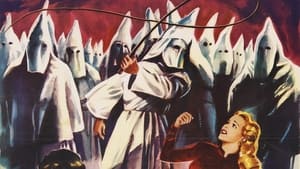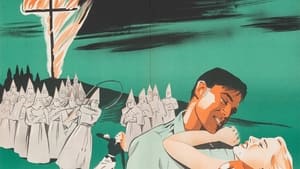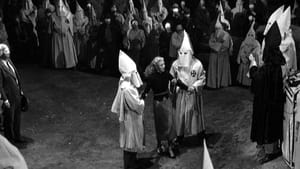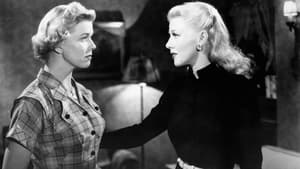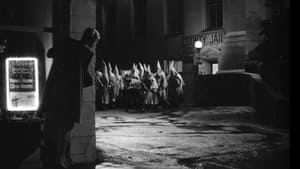Contact: info@alwanfilm.com
Video Sources 0 Views
- Watch trailer
- Storm Warning

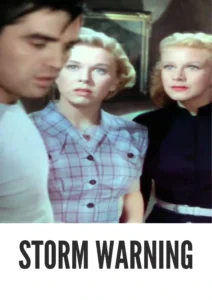
Synopsis
Table of Contents
ToggleReview: Storm Warning 1951 Colorized – A Gripping Thriller Unveiling the Dark Realities of Prejudice and Corruption

Introduction
Storm Warning, released in 1951, is a riveting thriller that exposes the insidious grip of corruption and prejudice in a small Southern town. Directed by Stuart Heisler, this film offers a chilling portrayal of the consequences of turning a blind eye to injustice. In this review, we’ll delve into the intense world of Storm Warning and its enduring impact on social commentary in cinema.
Check The Full Colorized Movies List
Check Our Colorized Movies Trailer Channel
Understanding Storm Warning 1951 Colorized Director, Cast, and Genre
Directed by Stuart Heisler, Storm Warning features a talented cast led by Ginger Rogers as Marsha Mitchell, Ronald Reagan as Burt Rainey, and Doris Day as Lucy Rice. The film falls within the genre of thriller, known for its suspenseful storytelling and exploration of social issues.
Exploring the World of Storm Warning 1951 Colorized: Plot and Characters
Set in a small Southern town, Storm Warning follows Marsha Mitchell, a model visiting her sister Lucy. When Marsha witnesses a Ku Klux Klan murder, she becomes embroiled in a dangerous web of corruption and prejudice. As she teams up with journalist Burt Rainey to uncover the truth, Marsha must confront the dark forces threatening to tear the town apart.
The Art of Film Colorization
While Storm Warning was originally filmed in black and white, its early colorized version adds a new layer of visual richness and depth to its portrayal of 1950s America. The colorization process enhances the film’s visual appeal and captures the vibrant atmosphere of its setting with stunning clarity.
Early Colored Films: A Brief History
The history of early colored films is marked by innovation and experimentation as filmmakers sought to enhance the visual appeal of their movies. From hand-tinted frames to pioneering technicolor processes, the evolution of colorization techniques transformed the cinematic landscape, offering audiences a new way to experience classic stories and immersive settings.
Storm Warning (1951) and Its Early Colored Version
The decision to release Storm Warning in a colorized format was made with the intention of immersing audiences in the vibrant world of 1950s America and enhancing the film’s visual impact. While some purists may prefer the original black and white version, the early colorized edition of the film adds a new dimension to its storytelling and captures the tension and drama of the narrative with stunning clarity.
The Debate Over Film Colorization
The debate over film colorization continues to divide audiences and industry professionals alike. While some argue that colorization breathes new life into classic films and makes them more accessible to modern audiences, others maintain that it compromises the artistic integrity of the original work. As technology advances and filmmaking techniques evolve, the debate over colorization remains a topic of ongoing discussion within the film community.
Examining Storm Warning (1951) as an Early Colored Film
Viewing Storm Warning in its early colorized iteration offers audiences a fresh perspective on its portrayal of corruption and prejudice in 1950s America. The colorization process enhances the film’s visual appeal and captures the vibrant atmosphere of the small Southern town with stunning clarity. As Marsha Mitchell confronts the dark forces threatening to tear the community apart, viewers are drawn into a world of danger and intrigue that resonates with timeless relevance.
Influence and Legacy: Storm Warning 1951 Colorized’s Impact on Cinema
Storm Warning is widely regarded as a classic example of the thriller genre that continues to captivate audiences with its gripping storytelling and memorable performances. Its enduring legacy has inspired generations of filmmakers and influenced the portrayal of social issues in cinema. As a testament to its lasting impact, Storm Warning remains a powerful indictment of corruption and prejudice that continues to resonate with audiences around the world.
Director’s Cinematic Legacy: Beyond Storm Warning 1951 Colorized
Stuart Heisler’s directorial legacy extends beyond Storm Warning, encompassing a diverse body of work in film and television. As a filmmaker, Heisler was known for his ability to tackle complex themes and create compelling narratives that resonated with audiences. Storm Warning stands as a testament to his talent and creativity, solidifying his reputation as one of the great directors of classic Hollywood cinema.
Themes Explored in Storm Warning 1951 Colorized
At its core, Storm Warning explores themes of corruption, prejudice, and the struggle for justice in a small Southern town. Through its compelling storyline and memorable characters, the film delves into the moral dilemmas faced by its protagonists as they confront the dark forces threatening to tear their community apart. As Marsha Mitchell and Burt Rainey fight to expose the truth, viewers are confronted with questions about the nature of power and the price of silence in the face of injustice.
Reception and Controversy Surrounding Storm Warning 1951 Colorized
Upon its release, Storm Warning received widespread critical acclaim for its gripping storytelling, atmospheric cinematography, and powerful performances. However, the decision to release the film in a colorized format sparked debate among fans and critics alike. While some praised the colorization process for enhancing the film’s visual appeal, others questioned its necessity and expressed concern about preserving the integrity of Heisler’s original vision.
Where to Watch Storm Warning 1951 Colorized Online
For those eager to experience Storm Warning for themselves, the film is readily available on popular streaming platforms such as Amazon Prime Video, Google Play Movies, and iTunes. Whether viewed in its original black and white format or its early colorized iteration, Storm Warning offers a gripping cinematic experience that is sure to captivate audiences.
FAQs About Storm Warning 1951 Colorized
1. Is Storm Warning based on a true story?
No, Storm Warning is a fictional thriller that explores the dark realities of corruption and prejudice in a small Southern town. While the film’s storyline is a work of fiction, its portrayal of social issues draws inspiration from real-life events and universal themes.
2. Who starred in Storm Warning?
Storm Warning stars Ginger Rogers as Marsha Mitchell, Ronald Reagan as Burt Rainey, and Doris Day as Lucy Rice. Their powerful performances bring depth and intensity to the film’s characters, capturing the danger and intrigue of the small Southern town.
3. What is the central message of Storm Warning?
At its core, Storm Warning explores the consequences of corruption and prejudice in a small Southern community. Through its compelling storyline and memorable characters, the film raises questions about the nature of power and the price of silence in the face of injustice.
4. Why was Storm Warning released in a colorized format?
The decision to release Storm Warning in a colorized format was made with the intention of immersing audiences in the vibrant world of 1950s America and enhancing the film’s visual impact. While some purists may prefer the original black and white version, the early colorized edition of the film adds a new dimension to its storytelling and captures the tension and drama of the narrative with stunning clarity.
5. What is the legacy of Storm Warning?
Storm Warning is widely regarded as a classic example of the thriller genre that continues to resonate with audiences for its gripping storytelling, atmospheric cinematography, and memorable performances. Its enduring legacy has inspired generations of filmmakers and continues to captivate audiences with its timeless themes and universal appeal.
6. Are there any sequels or remakes of Storm Warning?
While there have been no official sequels or remakes of Storm Warning, the film’s enduring legacy has inspired countless adaptations and reinterpretations in various media. However, none have achieved the same level of critical acclaim or cultural significance as the original 1951 film.
7. Where can I watch Storm Warning online?
For those eager to experience Storm Warning for themselves, the film is readily available on popular streaming platforms such as Amazon Prime Video, Google Play Movies, and iTunes. Whether viewed in its original black and white format or its early colorized iteration, Storm Warning offers a gripping cinematic experience that is sure to captivate audiences.
Conclusion
In conclusion, Storm Warning (1951) stands as a powerful thriller that continues to captivate audiences with its compelling storytelling, atmospheric cinematography, and unforgettable performances. Whether viewed in its original black and white format or its early colorized iteration, Stuart Heisler’s masterful direction and the standout performances of the cast offer a cinematic experience that is both thrilling and thought-provoking. As Marsha Mitchell and Burt Rainey confront the dark forces threatening to tear their community apart, viewers are drawn into a world of danger, intrigue, and betrayal that resonates with timeless relevance. With its enduring legacy and universal themes, Storm Warning remains a gripping indictment of corruption and prejudice that continues to captivate audiences around the world.

